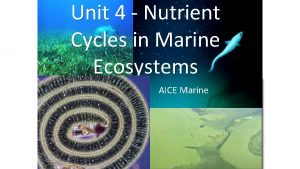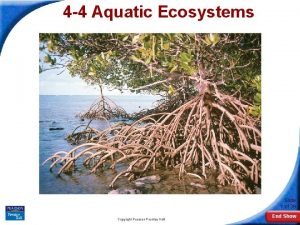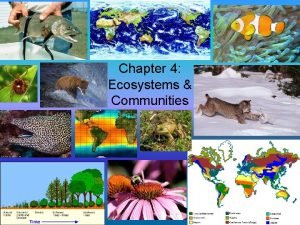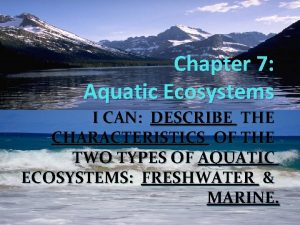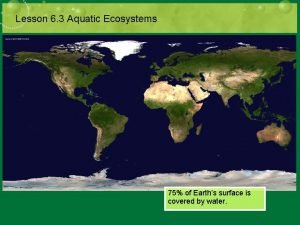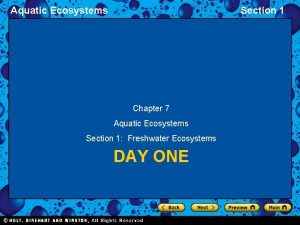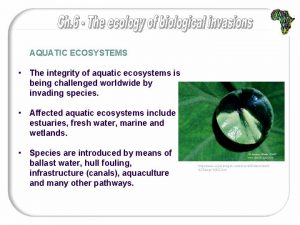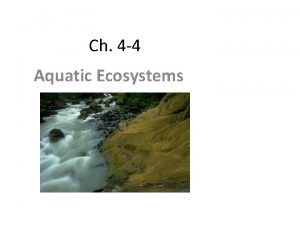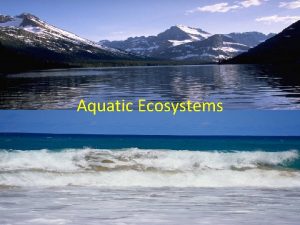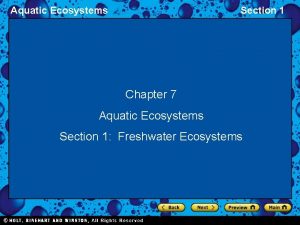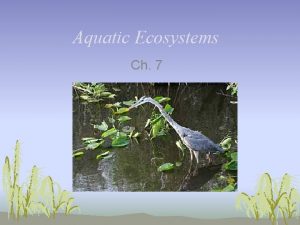Streamside forests reduce nutrient pollution of aquatic ecosystems














- Slides: 14

Streamside forests reduce nutrient pollution of aquatic ecosystems Donald E. Weller, Thomas E. Jordan, and Matthew E. Baker Smithsonian Environmental Research Center

Ecosystem services • Terrestrial – Wildlife habitat – Carbon sequestration – Forest products • Aquatic – Aquatic food chain – Control temperature – Pollutant regulation – Nutrient removal

Field studies of nitrogen removal

Nitrate concentration (mg N/l) Mid-Atlantic removal results Distance from field toward stream (m)

National stream and river restoration Riparian restorations 1990 -2003 > $5 billion > 20, 000 projects

Buffer prevalence varies widely

Problems “scaling up”. . . Watershed results mixed ? Transect results striking

(Mal)adaptive management Knowledge Evaluation Implementation Measurement

New geographic analysis sources flowpaths sinks Wellbuffered pathway transport pathway for 1 pixel Not so well-buffered Overlay sources and streams on elevation Identify downhill transport pathways Quantify width & aggregate paths

Prioritizing management efforts

Chesapeake Bay example § 321 watersheds § 3 physiographic provinces § focus on cropland buffers § empirical models for stream nitrate

Benefits differ among regions Stream Nutrient Levels <no buffers <current buffers <complete buffer <no cropland

Overall reductions 16% 32% 68%

Policy implications • Protect riparian areas – Conserve existing forest buffers – Restore missing forest buffers • Outreach and education • Focus incentive funding – Regional targeting – Site level targeting • Implement adaptive management – Improve models for estimating benefits – Measure outcomes
 Venkatraman ramakrishnan medium composition
Venkatraman ramakrishnan medium composition A terrestrial food web
A terrestrial food web Lesson outline lesson 2 aquatic ecosystems answer key
Lesson outline lesson 2 aquatic ecosystems answer key 4 aquatic ecosystems
4 aquatic ecosystems Chapter 6 biomes and aquatic ecosystems
Chapter 6 biomes and aquatic ecosystems Ecosystem webquest 5th grade
Ecosystem webquest 5th grade 4-4 aquatic ecosystems
4-4 aquatic ecosystems Aquatic areas
Aquatic areas Biomes and aquatic ecosystems
Biomes and aquatic ecosystems Chapter 7 aquatic ecosystems test answers
Chapter 7 aquatic ecosystems test answers Chapter 3 lesson 3 biomes and aquatic ecosystems
Chapter 3 lesson 3 biomes and aquatic ecosystems Section 4-4 aquatic ecosystems
Section 4-4 aquatic ecosystems Limestone ridges built by tiny animals
Limestone ridges built by tiny animals What are the two main types of aquatic ecosystems
What are the two main types of aquatic ecosystems Lesson 3: aquatic ecosystems
Lesson 3: aquatic ecosystems

